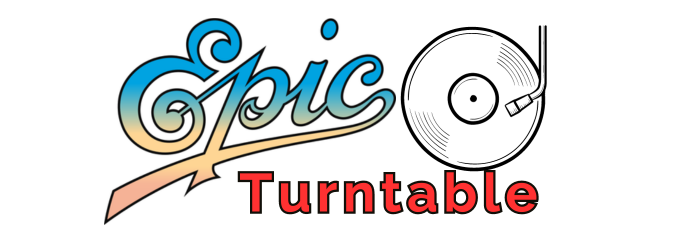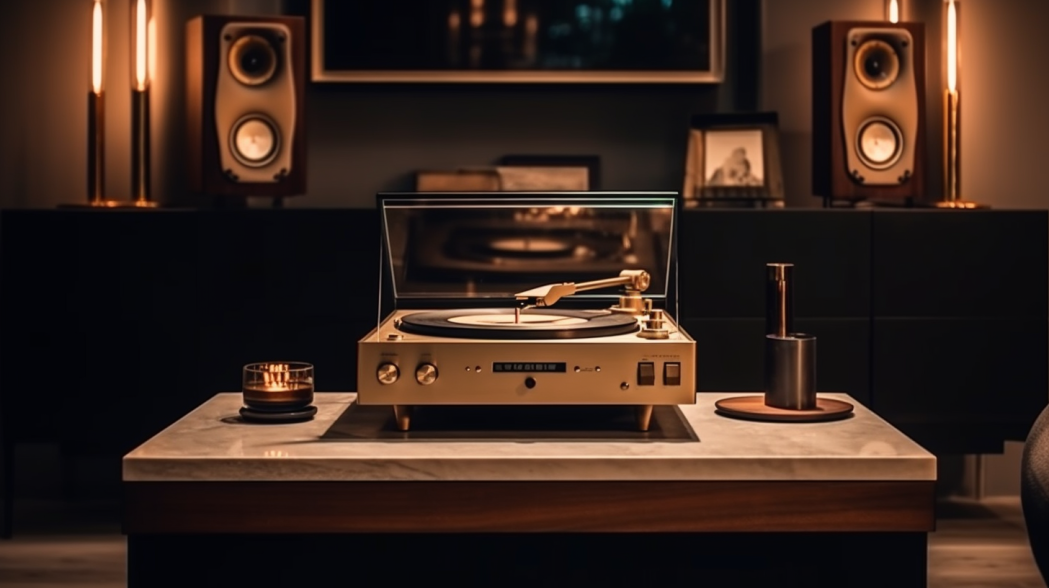Did you know that not all turntables are created equal when it comes to playing different types of records? While some turntables can handle any type of record, others may struggle with certain formats. Whether you’re a collector of vinyl records, 78 RPMs, or even old Edison cylinders, it’s important to ensure that your turntable is compatible with the format you’re looking to play. In this article, we will explore the different types of records and discuss the factors that determine whether a turntable can play them with ease. So, if you’re curious about whether your turntable can handle all types of records, keep reading to find out!

Types of Records
Vinyl Records
Vinyl records are the most popular and widely recognized type of records. They are made of polyvinyl chloride (PVC) and are known for their durability and high sound quality. Vinyl records come in various sizes, with the most common being 12-inch LPs (Long Plays) and 7-inch singles. They are compatible with most turntables and offer a wide range of music genres to choose from.
Shellac Records
Shellac records were popular in the early 20th century and are made from a mixture of shellac resin and fillers. They are brittle and fragile compared to vinyl records. Shellac records typically play at 78 revolutions per minute (RPM) and require specialized equipment, including a turntable with a 78 RPM speed setting and a specific stylus designed for shellac records. Due to their delicate nature, proper handling and storage are essential to preserve their lifespan.
Acetate Records
Acetate records, also known as lacquer discs, were commonly used for music recording and distribution before the advent of vinyl records. They are made from an aluminum plate coated with a layer of acetate, which is softer and more prone to wear than vinyl. Acetate records are typically used for short-term purposes, such as making test pressings or demo recordings. While some turntables can play acetate records, it is important to note that their lifespan and sound quality may be compromised.
Flexi Discs
Flexi discs, also known as phonosheets or soundsheets, are thin, flexible records made from a sheet of plastic coated with a grooved surface. They are often used for promotional purposes or as inserts in magazines. Flexi discs are typically smaller in size and require a specific type of turntable with a flexible tonearm to play. Due to their composition, they may not offer the same sound quality as traditional vinyl records.
Picture Discs
Picture discs are vinyl records that feature a printed image or design on one or both sides. They are highly collectible and visually appealing. Picture discs are playable on regular turntables, but some collectors prefer to display them rather than subject them to repeated play. As the image layer adds thickness, it may affect the sound quality to some extent.
EPs (Extended Plays)
EPs, or extended plays, are vinyl records that contain more tracks than a single but fewer tracks than a full album. They allow artists to release a collection of songs that are not enough for an album, but more substantial than a single. EPs are available in various sizes, including 7-inch and 12-inch formats. They can be played on regular turntables, as they usually follow the same format as standard vinyl records.
Turntable Components
Platter
The platter is the rotating platform on which the record sits and spins. It can be made of different materials such as metal, glass, or acrylic. The weight and quality of the platter can affect the overall sound reproduction and stability of the turntable. Heavier platters tend to provide better speed consistency and reduce vibrations.
Tonearm
The tonearm is an essential component that holds the cartridge and stylus responsible for tracking and reading the grooves of the record. It allows the stylus to smoothly move across the record surface. A well-designed tonearm should have an adjustable tracking force and anti-skate control to ensure accurate playback and minimize wear on the record.
Cartridge
The cartridge is an electronic component that converts the mechanical vibrations of the stylus into an electrical signal. It contains a stylus (needle) that makes direct contact with the record grooves. There are two main types of cartridges: moving magnet (MM) and moving coil (MC). Turntables with interchangeable cartridges offer flexibility in accommodating different types of records.
Stylus
The stylus is the needle-like attachment at the end of the cartridge. It is responsible for following the grooves on the record, extracting the sound information, and transferring it to the cartridge as an electrical signal. Different stylus shapes and sizes are available, each designed for specific types of records. Compatibility with different record types and conditions should be considered when selecting a stylus.
Motor
The motor is the mechanical component that drives the rotation of the turntable platter. There are two main types of motor drives used in turntables: belt drive and direct drive. Belt drive turntables use an elastic belt to transfer the motor’s rotational force to the platter, resulting in lower motor vibrations being transmitted to the stylus. Direct drive turntables have the motor directly connected to the platter, offering more precise speed control.
Belt or Direct Drive
The choice between a belt drive and a direct drive turntable depends on personal preference and specific requirements. Belt drive turntables often exhibit lower motor noise and better isolation from vibrations, making them suitable for audiophiles seeking higher sound quality. Direct drive turntables, on the other hand, are known for their durability, consistent speed, and suitability for DJing or scratching.
Compatibility with Vinyl Records
Standard Vinyl Records
Standard vinyl records typically refer to 12-inch LPs (Long Plays) and 7-inch singles. These records play at a rotational speed of 33 1/3 RPM (Revolutions Per Minute) and 45 RPM, respectively. Most modern turntables have selectable speed settings to accommodate these standard vinyl record types. The compatibility of a turntable with standard vinyl records is a fundamental feature to consider when purchasing a turntable.
Microgroove Vinyl Records
Microgroove vinyl records revolutionized the music industry in the mid-20th century by enabling longer playing times and improved sound quality. They feature narrower grooves and can hold more tracks per side compared to previous record formats. Microgroove records are compatible with turntables that support 33 1/3 RPM playback.
LP (Long Play) Records
LP records are 12-inch vinyl records that can typically hold around 20 to 30 minutes of music per side. They require turntables capable of playing at 33 1/3 RPM speed. LP records are the most common format for full-length albums and provide an immersive listening experience for music enthusiasts.
EP (Extended Play) Records
EP records are typically 7-inch or 12-inch vinyl records that contain more tracks than a single but fewer tracks than a full album. They play at either 33 1/3 RPM or 45 RPM, depending on the specific release. EP records are compatible with turntables that can accommodate either of these playback speeds.
45 RPM Singles
45 RPM records, commonly known as singles, are 7-inch vinyl records that typically contain one song per side. They require turntables capable of playing at the higher speed of 45 RPM. The compatibility with 45 RPM singles is important for those who enjoy collecting and listening to individual songs or hit singles.
78 RPM Records
78 RPM records were popular in the early days of recorded music and are made of shellac. They feature wider grooves and require a higher rotational speed compared to standard vinyl records. Playing 78 RPM records requires a specialized turntable with a selectable speed setting and a stylus designed specifically for shellac records.
Compatibility with Shellac Records
Materials Used in Shellac Records
Shellac records were widely used before the introduction of vinyl records. They are made from a mixture of shellac resin and fillers, which gives them their distinctive brittle and fragile nature. Due to their composition, shellac records require specific handling and care to avoid damage and prolong their lifespan.
Size and Speed Variations
Shellac records typically come in a 10-inch format and play at a rotational speed of 78 RPM. These records require specialized turntables that have a selectable speed setting of 78 RPM. It is important to ensure compatibility with shellac records before attempting to play them on a turntable, as playing at the wrong speed or using an inappropriate stylus can lead to damage and poor sound quality.
Stylus Considerations
Shellac records have wider grooves and a different composition than vinyl records. Therefore, using the right stylus is crucial to ensure proper tracking and minimize wear on the record. Stylus options specifically designed for playing shellac records are available and should be utilized to maintain the record’s integrity and sound quality.

Compatibility with Acetate Records
Characteristics of Acetate Records
Acetate records, also known as lacquer discs, were commonly used for music recording and distribution before the widespread adoption of vinyl records. They are made from an aluminum plate coated with a layer of acetate. Acetate records have a shorter lifespan compared to vinyl records and are more susceptible to wear and degradation.
Playback Considerations
Playing acetate records requires special care and attention. Due to their softer composition, the stylus can wear down more quickly, causing deterioration of the sound quality. Additionally, the acetate layer can easily break or chip, leading to permanent damage. It is recommended to use a turntable with an adjustable tracking force and a stylus specifically designed for playing acetate records to minimize the risk of damage and ensure optimal playback quality.
Compatibility with Flexi Discs
Flexibility and Material
Flexi discs, also referred to as phonosheets or soundsheets, are thin, flexible records made from a sheet of plastic coated with a grooved surface. Their flexibility allows them to be packaged in magazines or used as promotional materials. Flexi discs can be challenged by standard turntables due to their thin and flexible nature, requiring turntables with a specialized flexible tonearm to achieve proper tracking.
Playback Challenges
Playing flexi discs can present some challenges due to their flexibility and lightweight nature. The grooved surface may not lay flat on the turntable, leading to uneven tracking and potential skipping or distortion of the sound. Additionally, the lower mass of flexi discs can result in reduced bass response and overall sound quality. While it is possible to play flexi discs on regular turntables, it is important to consider the potential limitations and adjust the turntable settings accordingly to achieve the best playback possible.

Compatibility with Picture Discs
Manufacturing Process
Picture discs are vinyl records that feature a printed image or design on one or both sides. The manufacturing process involves sandwiching the printed image between two transparent vinyl layers, resulting in a visually captivating product. Picture discs are playable on regular turntables without any significant compatibility concerns.
Sound Quality and Playback
While picture discs offer an aesthetically pleasing addition to a vinyl collection, they may not provide the same sound quality as traditional vinyl records. The printed image layer adds thickness to the disc, potentially affecting the playback quality. However, advances in manufacturing techniques have improved the sound quality of picture discs over the years. It is ultimately a matter of personal preference, whether to prioritize the visual appeal or the audio fidelity when considering picture discs.
Compatibility with EPs (Extended Plays)
EPs in Vinyl Format
EPs, or extended plays, are vinyl records that contain more tracks than a single but fewer tracks than a full album. They are available in various sizes, including 7-inch and 12-inch formats. EPs in vinyl format are compatible with regular turntables that can accommodate the corresponding playback speed (typically 33 1/3 RPM or 45 RPM).
Playback Requirements
Playing EP records requires turntables that can adjust their speed settings according to the specific EP format (e.g., 33 1/3 RPM or 45 RPM). Some turntables offer selectable speed settings, while others may require a manual belt adjustment or a separate motor for each speed. It is important to ensure the turntable is capable of playing the desired EP format before attempting to play the record.
Turntable Features for Versatility
Adjustable Speed
Turntables with adjustable speed settings allow you to play records of different formats and rotational speeds. Whether you have standard vinyl records, 78 RPM shellac records, or EPs, a turntable with adjustable speed ensures compatibility and flexibility when enjoying various types of records. Being able to switch between different playback speeds is a valuable feature for any record collector.
Interchangeable Cartridges and Stylus
Turntables that offer interchangeable cartridges and stylus options provide versatility when it comes to playing different types of records. By having the ability to switch cartridges, you can easily optimize the turntable setup for either vinyl, shellac, or acetate records. Additionally, having multiple stylus options enables you to use the most appropriate stylus for each record type, ensuring optimal playback quality.
Adjustable Tonearm Weight
An adjustable tonearm weight allows you to fine-tune the tracking force, which is the amount of pressure the stylus exerts on the record’s surface. Different record types may require different tracking forces for optimal playback. Being able to adjust the tonearm weight ensures that the stylus is neither too heavy nor too light on the record, minimizing wear and maintaining the best sound reproduction.
Anti-Skate Control
Anti-skate control is a feature that counteracts the natural inward force that occurs as the stylus moves across the record grooves. This force, known as skating force, can lead to uneven tracking and distortion if not properly addressed. An adjustable anti-skate control allows you to balance the inward force and ensure smooth, accurate tracking for different record types.
Different Platter Sizes
Some turntables offer interchangeable platters of different sizes. This feature allows you to easily switch between various record formats, such as 7-inch and 12-inch records. Having the appropriate platter size ensures optimal performance and stability when playing different types of records.
Conclusion
Choosing the right turntable requires considering the compatibility with the different types of records you intend to play. Understanding the characteristics of vinyl, shellac, acetate, flexi discs, picture discs, and EPs allows you to make an informed decision when selecting a turntable. Moreover, the various components and features of a turntable, such as the platter, tonearm, cartridge, stylus, motor, and adjustable settings, contribute to the versatility and performance of the turntable. By considering record types and turntable features, you can find the perfect combination that suits your preferences and ensures an enjoyable listening experience.

Hi there! I’m Eric Hoffman, the author behind EpicTurntable.com. I’m passionate about revolutionizing your music experience through vinyl. At EpicTurntable.com, you’ll find everything you need – from turntables and vinyl records to accessories. Whether you’re an audiophile or just starting out, I offer expert reviews, insightful articles, and the latest trends in the world of turntables. Dive into our community forums to connect with fellow vinyl lovers, or explore our online store for exclusive deals. Join me at EpicTurntable.com, where I’m dedicated to bringing you the classics and the latest hits all in one place!

